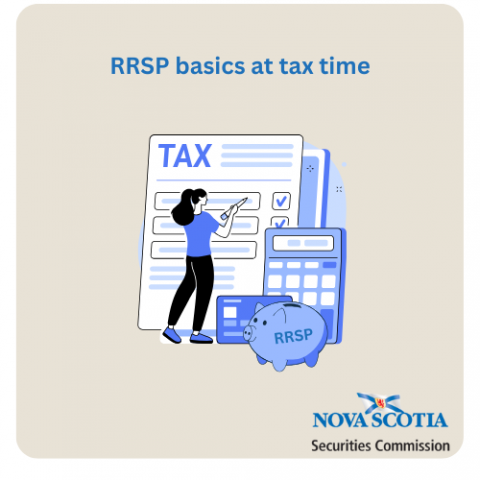Submitted by nsscadmin on

It’s the beginning of February and many Canadians are turning their attention to their annual income tax return. When it comes to investing that also means many Canadians are thinking about their Registered Retirement Savings Plan (RRSP) contributions. This year the deadline to contribute to an RRSP is March 3, 2025.
For anyone new to RRSP investing, or who may have opened one previously without knowing how they work, here are some basics to remember.
An RRSP is a type of registered financial account that can hold cash and investments. Late last year we published a blog post listing some of the eligible investments that can be held in a registered account like an RRSP.
To contribute to an RRSP you must have earned income to declare from the previous year. This determines your RRSP contribution limit, which for most people is 18 percent of your previous year’s earned income. The maximum for 2025 is of $32,490. (You should check with CRA to find out your exact contribution limit as it is affected by a number of other factors, including participating in an employer pension plan.)
There are certain tax benefits that come from contributing to an RRSP. They include:
- Tax deferral of the contribution, and
- Tax-deferred growth.
When you contribute to your RRSP, the amount you contribute is deducted from your taxable income. Here’s an example of how this works. Let’s say your taxable income is $50,000 and you make a $5,000 contribution to your RRSP. This will reduce your taxable income to $45,000. This means that you will owe taxes on a smaller amount and may set you up for an income tax refund.
Remember, like the deferred growth, your contribution is a tax deferral as well. While you get the benefit of a tax deduction today, your contribution will be taxed as income when withdrawn in the future from your RRSP.
Now let’s talk about tax deferred growth. Any investment income and growth accumulated by investments held in your RRSP is tax deferred. Instead of paying tax immediately on this growth it is deferred until you withdraw it from your RRSP account at retirement. Most people have a lower income at retirement which may result in less tax being paid on this deferred growth later in life.
The Nova Scotia Securities Commission does not provide investment advice. We are not advising or recommending the use of RRSP accounts. This post is simply to educate investors on RRSPs so they can be an informed investor when working with their adviser and making investment decisions.
